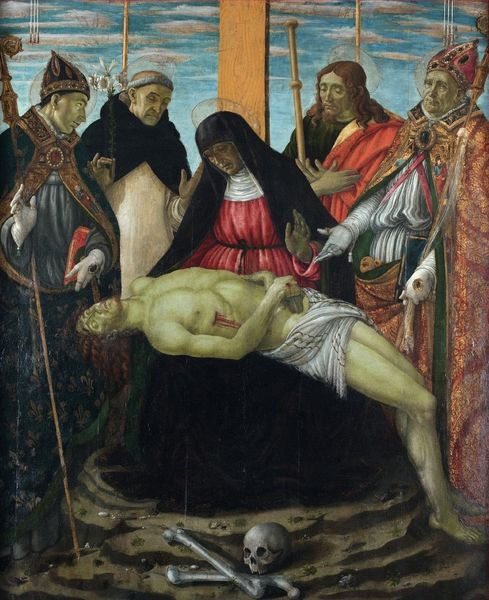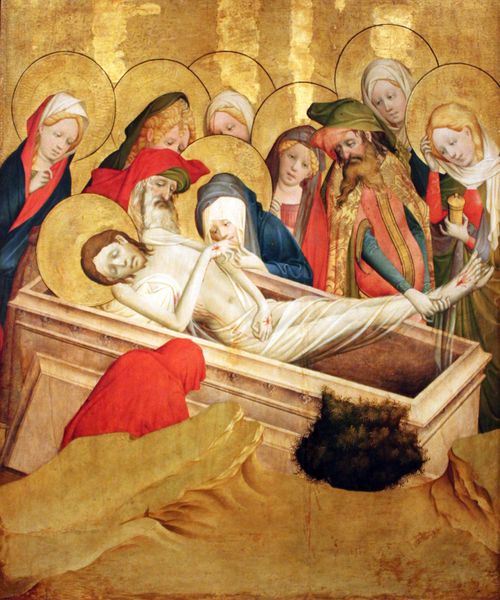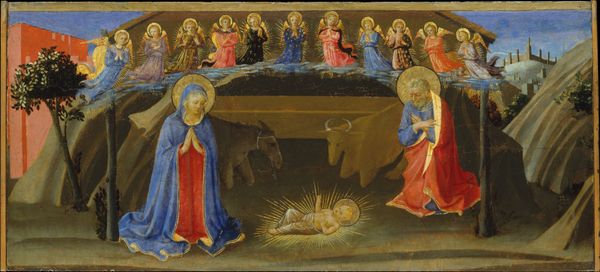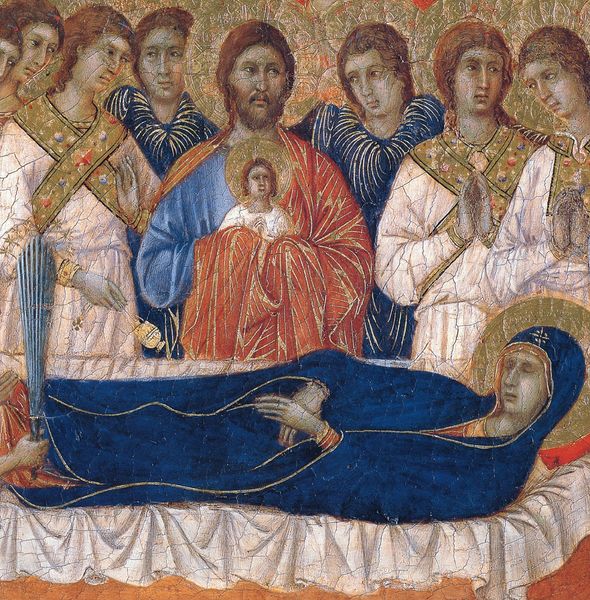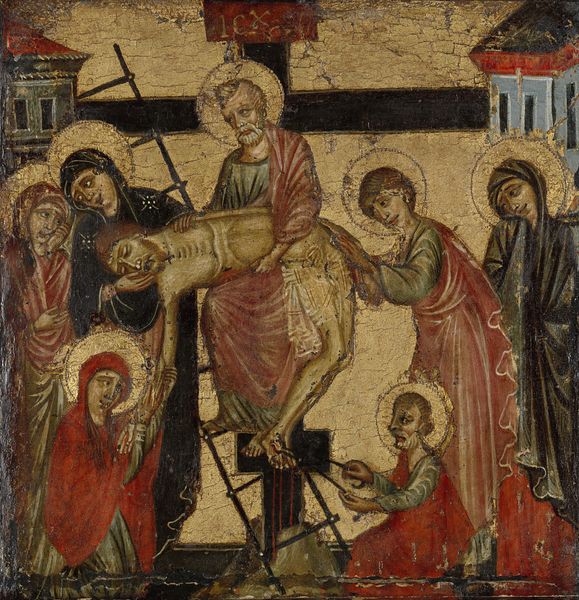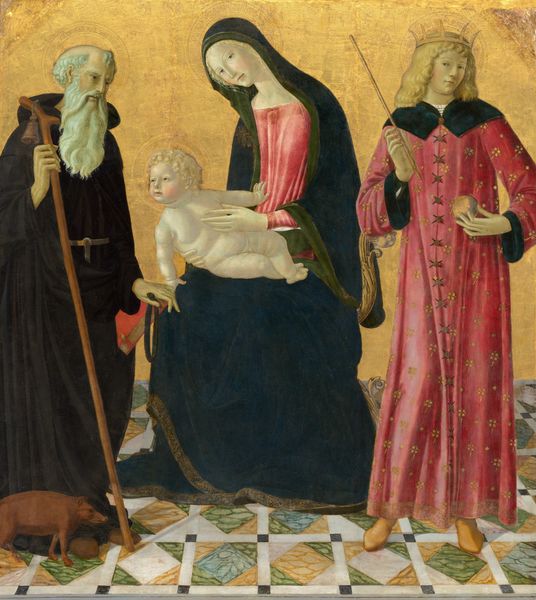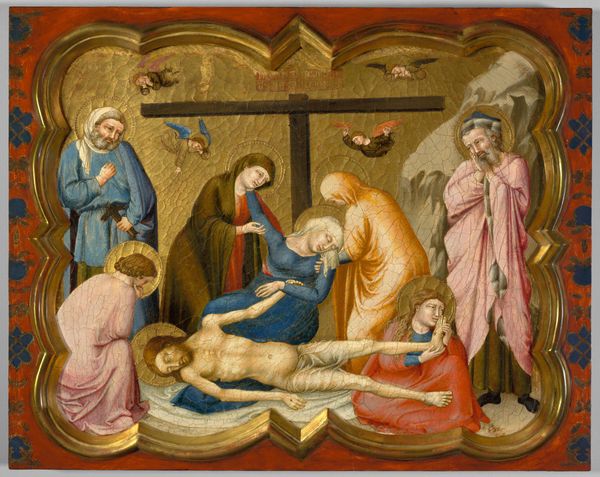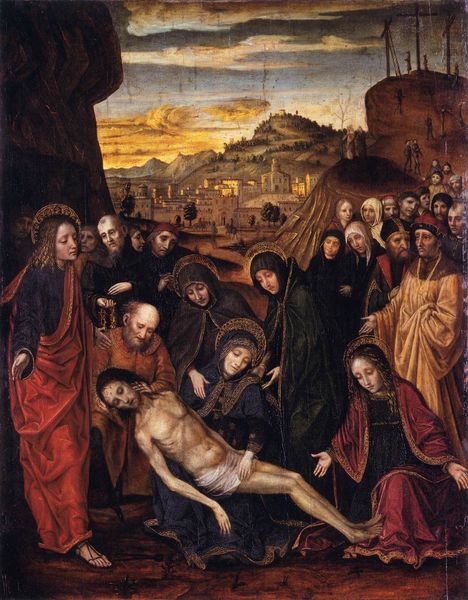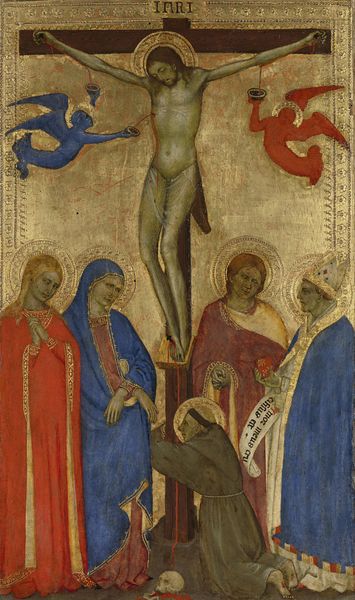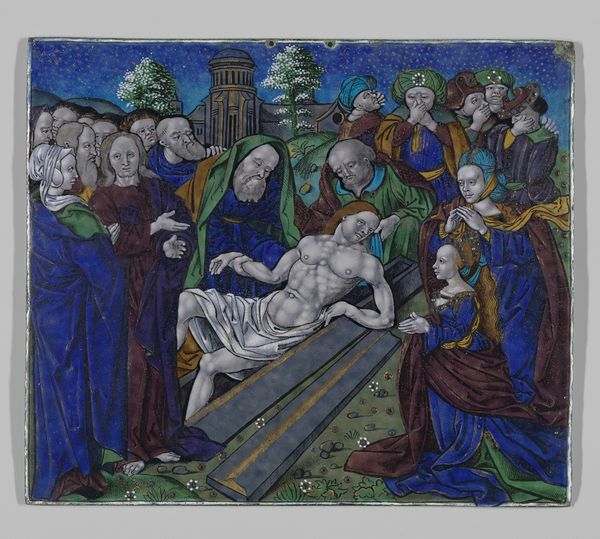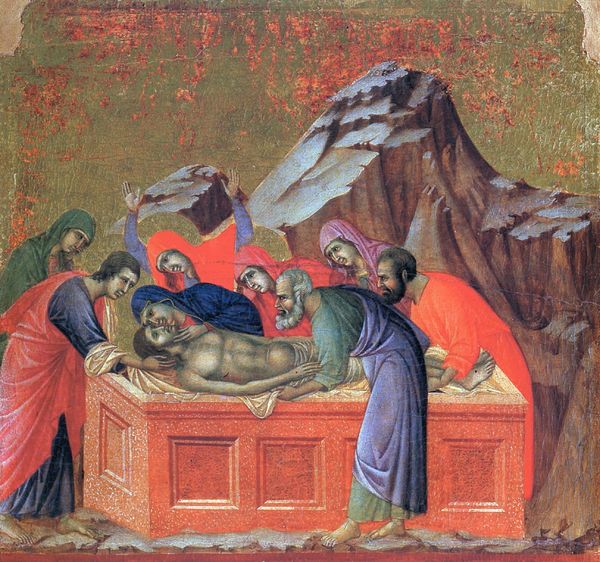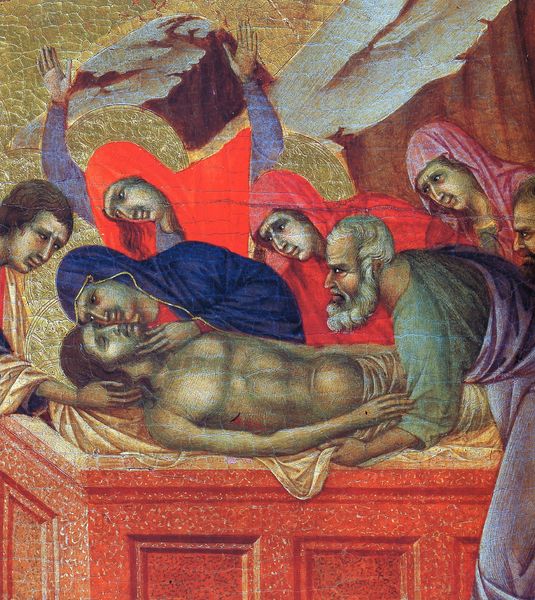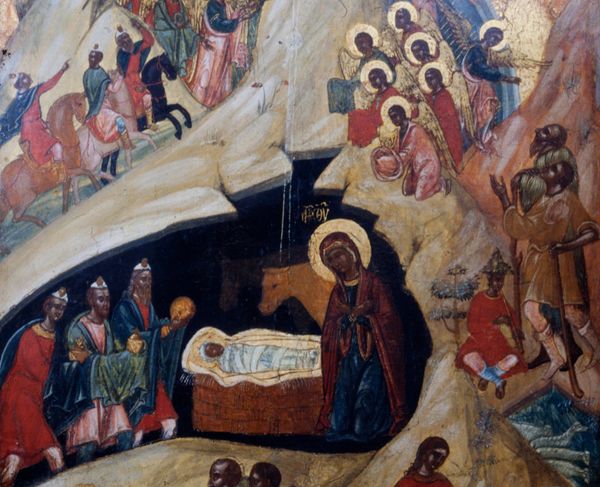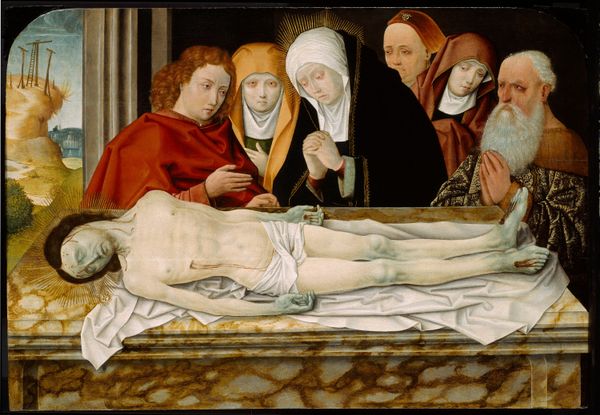
tempera, painting
#
portrait
#
medieval
#
tempera
#
painting
#
figuration
#
oil painting
#
history-painting
#
italian-renaissance
#
portrait art
Dimensions: height 18.5 cm, width 18 cm
Copyright: Rijks Museum: Open Domain
This small panel, "The Deposition and the Entombment", was made by an anonymous artist using tempera on wood. The material is a key to its function; icons like this one were not simply images, but were meant as objects of veneration. The artist would have painstakingly built up layers of pigment, ground from minerals and mixed with egg yolk for binding. The gold leaf haloes aren't just decorative, they suggest a divine light emanating from the figures, while the smooth wood surface helped the image to last. It would have been held, touched, perhaps even kissed – such contact part of its purpose. The artist may have been a monk, or someone working under strict religious guidelines. Icons walk a line between art and craft, between the aesthetic and the devotional. Looking closely at the materials and the process of making allows us to understand the spiritual and cultural importance imbued within the object.
Comments
rijksmuseum about 2 years ago
⋮
These two panels are probably fragments from a larger ensemble devoted to the Passion of Christ. The artist followed established conventions for depicting grief and sorrow through gesture. This approach was characteristic of the stiff, rather formulaic style derived from Greek and Byzantine models that was prevalent in 13th-century Italy.
Join the conversation
Join millions of artists and users on Artera today and experience the ultimate creative platform.
